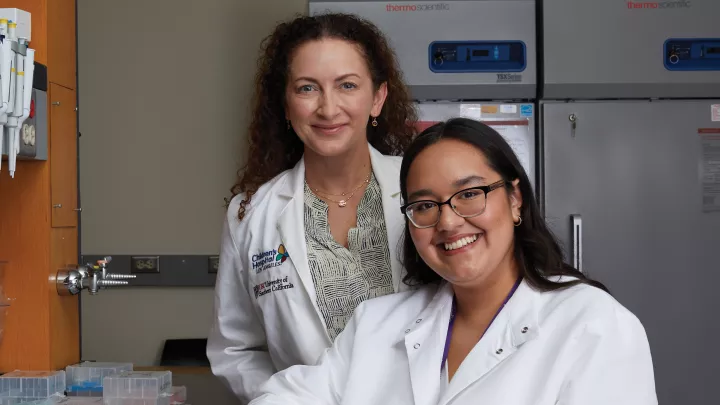Aqueous Humor Liquid Biopsy Laboratory: About the Lab
Research Overview
Retinoblastoma (RB) is the most common childhood eye cancer forming in one or both developing eye(s) of babies and toddlers. RB affects ~8000 children every year worldwide and is most often diagnosed before the age of 3. This cancer is a significant cause of vision loss, leads to eye removal in upwards of 50% of advanced cases and is life threatening if untreated. Unlike other pediatric cancers, RB cannot be directly biopsied due to risk of cancer spread outside the eye. Therefore, the diagnosis and ocular prognosis (the likelihood of saving the eye with therapy) for children with RB is made on the basis of clinical examination alone.
In 2017, this paradigm changed when Dr. Berry’s team demonstrated—for the first time—that the aqueous humor (AH), a clear fluid accessible from the front of the eye, contains DNA from the tumor and could be used for diagnosis and prognosis for saving the eye. This exciting discovery—that we could find information about the tumor simply by evaluating this ocular fluid—led to the development of the AH as a liquid biopsy for RB (Berry et al 2017). We further developed this liquid biopsy assay to detect chromosomal alterations that cause tumors to grow—called somatic copy number alterations (SCNAs) (Berry et al 2018) and to detect the initiating genetic mutations in the RB1 tumor suppressor gene (Xu et al 2020)—all from a single 100ul sample of AH (less than 1/100th the volume of a green pea).
Notably, we demonstrated that by measuring the percentage of tumor DNA in the fluid —called tumor fraction—we can actually predict whether the eye is responding to therapy, or if there was risk of cancer recurrence before the treating surgeon could detect a clinical change(Polski et al 2020).
Most exciting of all, we identified a specific chromosomal alteration, 6p gain, as associated with a 10-fold increased risk of treatment failure requiring surgical removal of the eye (Berry et al 2018, Xu et al 2020 – both publications were featured as cover stories of Molecular Cancer Research, an AACR Journal). We further demonstrated that in the 40% of patients with bilateral eye involvement, there are separate and distinct genomic biomarkers from each eye (Wong et al 2021), thus an eye-specific liquid biopsy is ideal for these patients.
Due to the success of these studies, the Aqueous Humor Liquid Biopsy Laboratory has active research collaborations ongoing at centers around the world including as part of the Children’s Oncology Group active trials.
Our long-term goal is to validate these molecular liquid biomarkers to directly impact patient care for children with RB by informing future clinical trials based on these molecular biomarkers.
This research represents a true paradigm shift for RB patients due to the previous complete lack of clinically relevant biomarkers as direct tumor biopsy is prohibited. Now, with the success of the AH as liquid biopsy, we can move towards a personalized, precision medicine approach for these pediatric patients.
This research laboratory is anchored by Dr. Jesse Berry (surgeon, ocular oncologist and physician-scientist) and Dr. Liya Xu (neuroscientist, geneticist, and expert in liquid biopsy and the use of single-cell technologies for the diagnosis of diseases) who bring their expertise together to use molecular diagnostics to combat ocular cancer and other vision-threatening ocular diseases.


